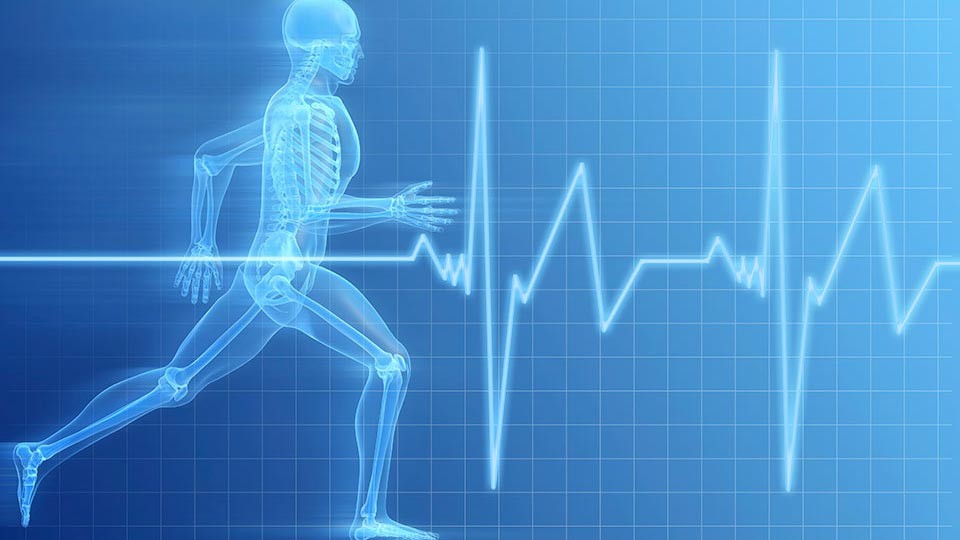RUN BETTER WITH OUR NEWSLETTER
Weekly updates on gear, offers & events
JOIN NOW
A VO2 max test can prove an invaluable tool for giving a clear indication of how one’s training is going. Basically the higher your VO2 max is, the more oxygen your body can deliver to your muscles and the harder and faster you can train and run. Many heart rate monitors will now work out your VO2 max without you needing to do an actual test.
You may be following a marathon training plan, but how do you actually know that you are using your precious time to the best of your ability? You may be following the mileage that is prescribed in the plan, but how do you know if you are training at the correct tempo? Very, very often we are actually running too hard on our ‘easy’ runs and not running fast enough in our speed work, thus not getting the maximum benefit from training.
Ideally you would want to do a VO2 max test 3 times during a season – at the beginning, middle and at the end, just before the race that you are training for. Of course if you have a heart rate monitor, like for example the Polar H10, Polar OH1+ or the Garmin HRM 600, you can check yourself how your VO2 max is and if you are improving and thus training correctly.
If you do not have a heart rate monitor, there are many gyms where you can get someone to test your VO2 max. One such test is as follows:
This is one of the simplest tests and is done on a treadmill. After warming up for 10 minutes the treadmill is set at a relatively slow pace of 8.05km/hr. After 3 minutes the assistant adjusts the treadmill to an incline of 2.5% and then every 2 minutes thereafter the incline is increased by another 2.5%. When the athlete is unable to continue, the stopwatch is stopped and the time recorded.
An estimate of the VO2 max can be calculated as follows:
VO2 max = (time x 1.444) + 14.99 (time is expressed in minutes and fractions of a minute)
This test would of course need to be done by a qualified person in a gym. A heart rate monitor that has VO2 max functionality will work out your specific VO2 max while you are sitting down without you needing to do the treadmill test. From our testing it seemed just as accurate as the treadmill test.
The other main indication of how well you are training and also how fast you are able to run a marathon or half marathon is lactate testing. Your lactate threshold is the point where lactate begins to accumulate in the blood faster than it can be removed. Basically when there is too much of a build-up of lactate in the blood stream our brain feels this and we start to feel sick or weak and so we automatically slow down. As we slow down, lactate in the bloodstream reduces as we are now below our lactate threshold.
Lactate testing is carried out by running on a treadmill – the speed of the treadmill is increased every 3-5 minutes until exhaustion. A blood sample either from the finger tip or ear lobe is taken at the end of each segment. This is then tested in a lactate analyser. A graph is then plotted of blood lactate v percentage of VO2 max. Ideally your lactate threshold should be as high as possible thus enabling you to run as hard without your system becoming ‘swamped’ with lactate.
When I did this test my tester was shocked at how low my lactate threshold was, she could not understand how I managed to run as fast as I did with so much lactate in my system. I then started training with a heart rate monitor, doing my easy runs really easy, so as not to increase the lactate in my system (previously I had been running far too hard on my so called easy runs). I also made sure my speed work was faster and above my lactate threshold. Gradually my lactate threshold increased and so by training in this way 6 months later I ran my best time in a marathon.
This general information is not intended to diagnose any medical condition or to replace your healthcare professional. If you experience any pain or difficulty with these exercises/advice, stop and consult your healthcare provider. Always seek the advice of a qualified healthcare professional with any questions you may have regarding this subject.
Gareth baileyMay 19, 2025 at 3:22pm
I’ve started running in the last couple of years but heart rate seems higher compared to others, main question should I be worried about this, can I be tested. Regards Gareth Replyadrian binnsMay 29, 2018 at 8:26pm
Hi,iim interested in blood lactate testing could you send me more details please including costing etc.
best wishes
Adrian Reply
Bhauliya MossMay 30, 2018 at 2:30pm
Hi Adrian,My blogpost was just giving general information, it is not something that we do in the shop. I got it done years ago and prices will have changed since then. Sorry not to have been able to help more. Reply